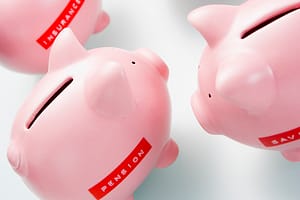Clive Lewis, head of enterprise, ICAEW on how you can avoid the debt noose
The last thing you want for your business is being in the red, drowning in debt and have creditors stalking you everywhere from the office to Facebook. It is businesses who stick to the age-old “cash is king” rule that avoid suffering debt-pression.
Take micro businesses for example – a recent ICAEW survey revealed that 58% of micro businesses (less than 10 employees) and 35% of businesses between 10 and 250 employees had no debt. Good cashflow management held them in good stead.
You don’t need us to tell you why cashflow is so important. After all, it’s what lets you pay wages, buy supplies and meet your financial obligations.
If you run into cashflow trouble, you won’t have much choice but to try to extend your overdraft or take out a loan – and there’s no guarantee either of these options will be available to you. Cashflow problems often start when businesses offer credit terms that are too relaxed, buy on credit, or take on employees or sub-contractors who require regular payment. This is when suddenly cashflow becomes an issue.
So what can you do about it? Here are six killer strategies to avoid the noose of debt:
1. Record each and every trading transaction – excel at Excel
New businesses need to establish some good habits. These start by making sure that the business accurately and regularly records details of trading transactions. This might be in a manual cashbook, on a computer using a spreadsheet or accounting software, or using a simple ‘paid’ / ‘unpaid’ system for bills. Accounting records must allow the business to instantly find out what monies are owed from customers and the amounts unpaid to suppliers.
2. Don’t live in the present – make cashflow forecasts
A cashflow forecast is essential to be confident about the business being able to meet its commitments. The forecast will detail when receipts are expected and payments are required. Forecast receipts and payments are usually analysed into months but can be weekly or even daily if the cash position is tight.
You start with what bills are already owed or owing, and known commitments such as the weekly or monthly expenses such as payroll, rent and leasing or hire purchase payments. You then build in predictions of receipts and payments from future sales and purchases over the forecast period – usually up to a year ahead, although a bank will require longer if you are seeking a loan or overdraft.
Knowing your current bank balance and how you expect it to change over next three months is vital. Cashflow forecasts should be a key tool in the management toolkit. They can highlight when the business might run low on cash and can be the basis for an action plan to remedy the situation before it happens.
3. Receipts, receipts, receipts
For big value sales on credit, check the customer’s credit rating. Agree the terms of payment with the customer before starting work. Invoice as soon as the goods have reached the customer or service rendered.
Regularly progress payment with the customer starting a few days after invoicing. If payment is not received within the agreed period, progress payment quickly and consider how soon you stop supplies or services. If still unpaid, use solicitors’ letters and threaten court proceedings. If still not paid, consider whether to go to court, or whether you would be throwing good money after bad by doing so.
4. Pay your suppliers ON TIME, come what may
Agree payments terms with suppliers at the start of trading with them and always try to stick to them. If you think it may not be possible to pay, contact the suppliers concerned and ask for more time. Provided you consistently pay on time – and requests to defer payment are rare – they will probably agree to delay payment. Letting suppliers down may be reflected in your credit rating which may come back to affect future supplies.
5. Control the working capital before debt controls your business
Managing cashflow is in part a mirror image of the business’ investment in working capital. Generally, the higher the value of stock or work-in-progress, or monies owed by debtors, the greater the difficulty in keeping control of cashflow. So maintaining a tight grip on stocks and debtors should free up cash for use elsewhere in the business.
6. Buying or hiring? The capital expenditure question
Decisions to invest in capital equipment such as computers, equipment or motor cars should be scrutinised carefully. The acid test is: can the money be more profitably used elsewhere?
If the new asset is essential to the business, think about deferring payment by hire purchase, leasing, or hiring. Also consider the tax perspective. If you have been making losses, leasing or hiring might be preferable.
Clive Lewis is the head of enterprise at The Institute of Chartered Accountants in England and Wales (ICAEW)
More for you:
Register for our free newsletter
For up-to-the-minute insights, news and gossip for London professionals and business leaders
The London Business Summit: Thriving in London, Tuesday 25 June 2013
Discover opportunity, explore innovation, drive long-term profits
Speakers include Martha Lane Fox, Alastair Lukies, Julie Meyer, Mike Butcher, Jo Valentine and many more.
READ ONLINE NOW: Securing Britain’s Future
How London’s business leaders would safeguard our economic future
Boris Johnson, Martha Lane Fox, Doug Richard, Xavier Rolet and more than 25 other CEOs and entrepreneurs share their insights.






Leave a Comment